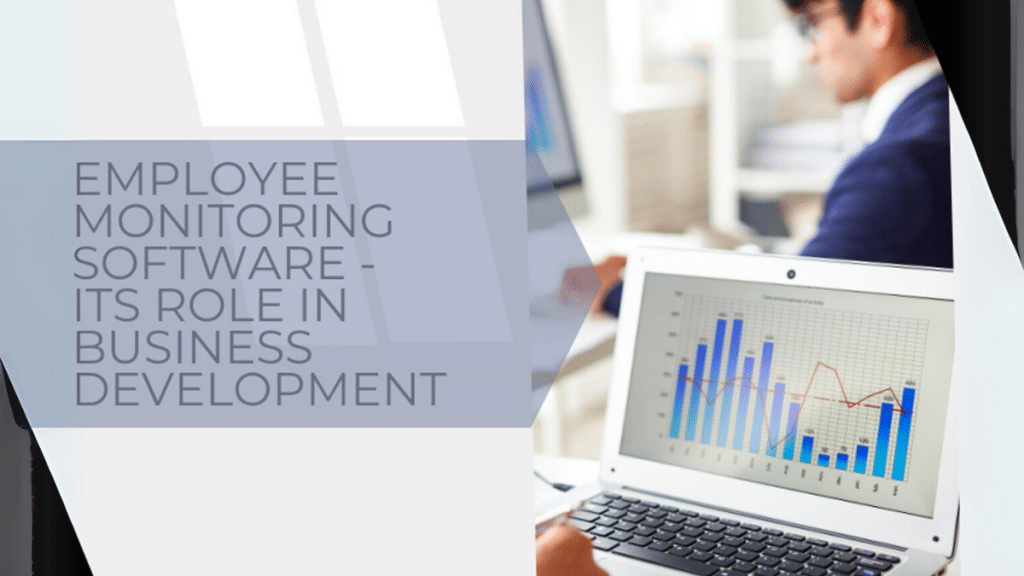Today’s fast-developing business environment contributes to the employee monitoring software advancement to enhance productivity and streamline operations. By using monitoring software, businesses can track performance, ensure compliance, and maintain data security. Beyond just daily tasks and activities, employee monitoring plays a significant role in the broader development, and growth of a business. It helps reshape how organizations manage and develop their teams.
What Is Employee Monitoring Software?
Employee monitoring software is an instrument designed to track employees’ activities like email monitoring or individual engagements. The mission of such tracking activities is to collect records of work-related and private actions. The collected records are used to analyze the productivity rate of the staff, define whether employees are slacking off or working hard. Even giant enterprises like Walmart, Barclays, IBM implement employee monitoring software to measure performance and manage remote teams, to ensure efficiency and security in various business operations. Besides, the recordings allow you to get the data real-time.
How Monitoring Tools Help Track Employee Performance?
It is a rational approach to integrate monitoring software in your business. There will appear many benefits due to the structured data on how your employees work. The analyzed data will show the following:
- real-time activity tracking. This software captures real-time data on employees’ activities, including time spent on tasks, active vs. idle time, the use of applications + web history. This allows employers to see how productive your staff is and at what time spans he is more efficient or not. As a solution, every manager is capable of taking some measures to fix the situation.
- performance metrics and records. This allows you to get records on key performance indicators (KPI). It tracks task completion rates, time taken per project, and attendance, which helps managers understand employee performance trends over time. These reports allow businesses to stress out inefficiencies, identify top performers, and address areas where employees may need extra support or training.
- task and project management integration. Some monitoring tools can be integrated with project management software like Trello or Asana. It helps in assigning workloads and keeping track of overall project progress.
- remote workforce management. With more businesses practicing remote and hybrid work modes, employee monitoring software is essential in managing a workforce. These tools track how remote employees use their time, whether they are doing tasks well, and how their productivity compares to in-office staff.
Improving Business Decision-Making
Employee monitoring instruments offer businesses valuable data that plays a crucial role in decision-making. By providing real-time data on employee performance, attendance, productivity, and engagement, this software supplies managers and leaders with significant information for making informed decisions.
For example, monitoring software can help define underperforming areas. It allows managers to set resources more effectively or offer extra training where required. This can contribute to better task management, improved project timelines, and higher overall efficiency. Additionally, the software can specify top performers, allowing businesses to reward and retain key employees, ultimately reducing turnover and fostering a motivated workforce.
Ensuring Compliance and Security
Ensuring compliance and security is one of the key roles of employee monitoring software in any business. Many industries are subject to strict regulations regarding data handling, privacy, and security (e.g., GDPR, HIPAA, or PCI DSS). Monitoring software helps ensure that employees follow these rules by tracking activities like data access, file transfers, and communications.
In addition to guaranteeing compliance, employee monitoring software positively affects cybersecurity by detecting and preventing unauthorized access to confidential company data. The software can monitor data transfers, access to sensitive documents, and alert management to suspicious behavior.
Supporting Employee Development
Due to analyzing activity records received from employee monitoring software, it is possible to support employee development. This proactive approach not only boosts individual performance but also contributes to the overall growth of the organization.
With the data collected, employers can develop individual training plans for each staff member. As a result, managers can recommend training sessions or transmit resources to help them improve productivity.
Employee monitoring software tools can also help employees uncover career growth opportunities by showing their achievements and contributions to the company. Employees who consistently perform well and meet their goals can use this collected data to advocate for promotions or salary increases, while managers can use the data to justify advancements.
Final Thoughts
The role of employee monitoring software is obvious; it can be utilized in favor of both employers and employees. Employers may make several conclusions like define the rate of workers’ productivity offering to undergo training sessions and educational or other additional resources. Managers become more confident in their employees and the realization of their duties.
Employees also get benefits if their managers use monitoring software. They know well how productive they are, on where they spend more time and fix the drawbacks. Since that time, managers will be more satisfied with the outcomes of their work.
